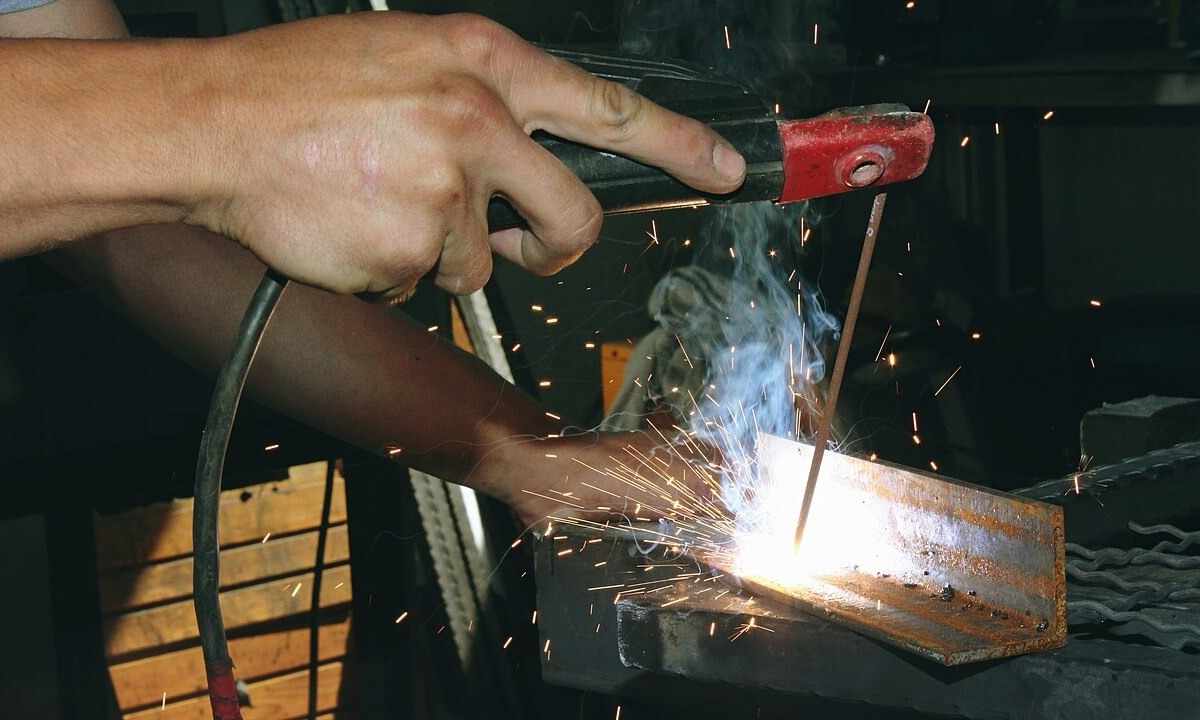Welding is process of formation of permanent connections owing to emergence between weld materials of interatomic communications at their heating or deformation. Not only metals, but also plastics can cook. Most often it is necessary to face electric welding staly and thermowelding of plastics.
It is required to you
- - welding machine for electric arc welding;
- - gas welding;
- - welding electrodes;
- - welding machine for plastic pipes;
- - heating device (iron, electric stove and so forth).
Instruction
1. To weld normal carbon steel, turn on the welding machine in network. Establish that value of welding current which corresponds to thickness of weld metal and diameter of the applied electrodes. Diameter of the used electrodes has to be approximately equal to thickness of weld metal. For work with mm O2 electrodes the welding current has to be equal 40-60 A, with electrodes of O2.5 of mm – 80-100 A, with mm O3 electrodes – 120-140 A. Connect wire "earth" to the welded part, insert electrode in the holder. Having brought electrode into contact with metal, light arch, take away electrode on 3-4 mm from part and, slowly moving it along seam and making oscillating motions across it, carry out welding of part.
2. When welding thin-sheet metal (0.8-1.5 mm) enclose under joint of the welded parts steel strip from the same metal or copper plate. Provide dense adherence of parts to substrate. Insert mm O2 electrode in the holder, establish welding current 40-60 A. Carry out welding falteringly – lighting arch, extinguishing it in 2-3 seconds and lighting in the same 2-3 seconds again. Also the welding seam has to be faltering – to avoid metal buckling. Having boiled thoroughly the site 15-20 mm long, begin to cook in other place, in the subsequent connecting separate seams in one continuous seam.
3. One of types of welding of stainless steels is carried out by the welding machine of direct current and special electrodes for stainless steel. The holder is connected to clip (+). Technology of welding in this case differs in nothing from welding of normal carbon steel. However there are also other ways significantly differing from traditional.
4. Gas welding is applied generally to thin-walled products. Warmly, necessary for melting became, receive burning in torch of oxygen and combustible gas. For implementation of welding it is necessary to kindle torch and to adjust burning torch to the necessary parameters, being guided by color of flame and form of torch. Then the flame of torch goes to joint of the connected parts and filler wire. Melting, they form weld. Qualitatively to cook gas welding, it is necessary to have certain skill.
5. Easily products from polyethylene and polypropylene cook. There is set of devices for welding of sheet and volume products from polymers. In particular, for welding of polyethylene film welding machines with hot wedge which weld sheets by means of two rollers pressing film to heated wedge are issued. However it is possible to weld sheets from polyethylene and pipe from polypropylene and without the special equipment: it is possible to use the normal iron. Put the welded sheets at each other, cover edges which should be welded with paper. Heat the iron to temperature of 250-300 °C and carry out it by corner according to paper – with speed about 3-5 cm/sec. To pick up the necessary motion speed of the iron, be trained on pieces.
6. By means of the iron it is possible to weld also polypropylene pipes end-to-end. Press faces of the connected pipes to mirror of the iron heated to 260 °C and take them in this situation some time. When edges of pipes begin to melt, press them to each other and record in such situation until they cool down. To connect pipes to the guaranteed quality, it is necessary to use special devices to welding of polymeric pipes.

